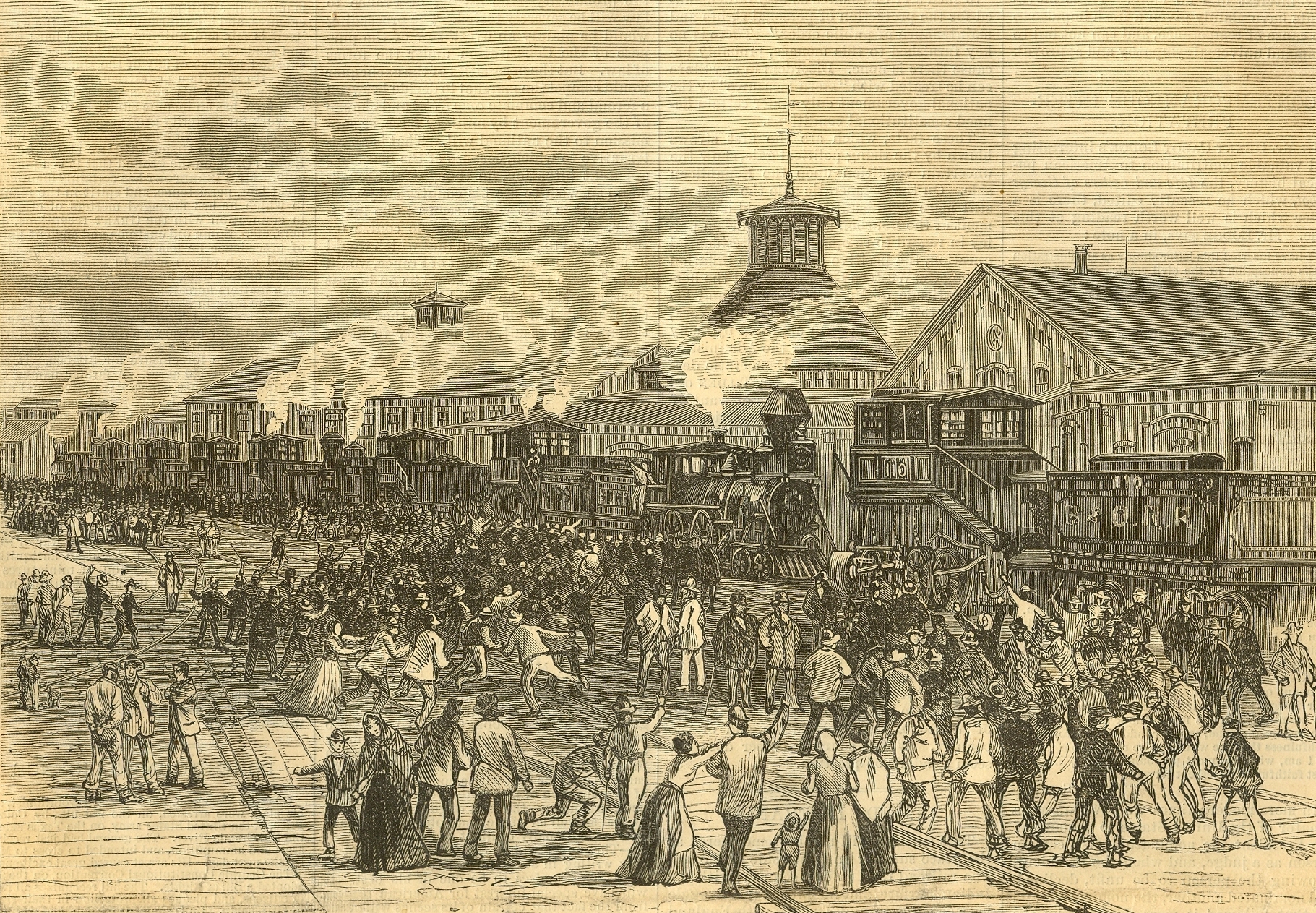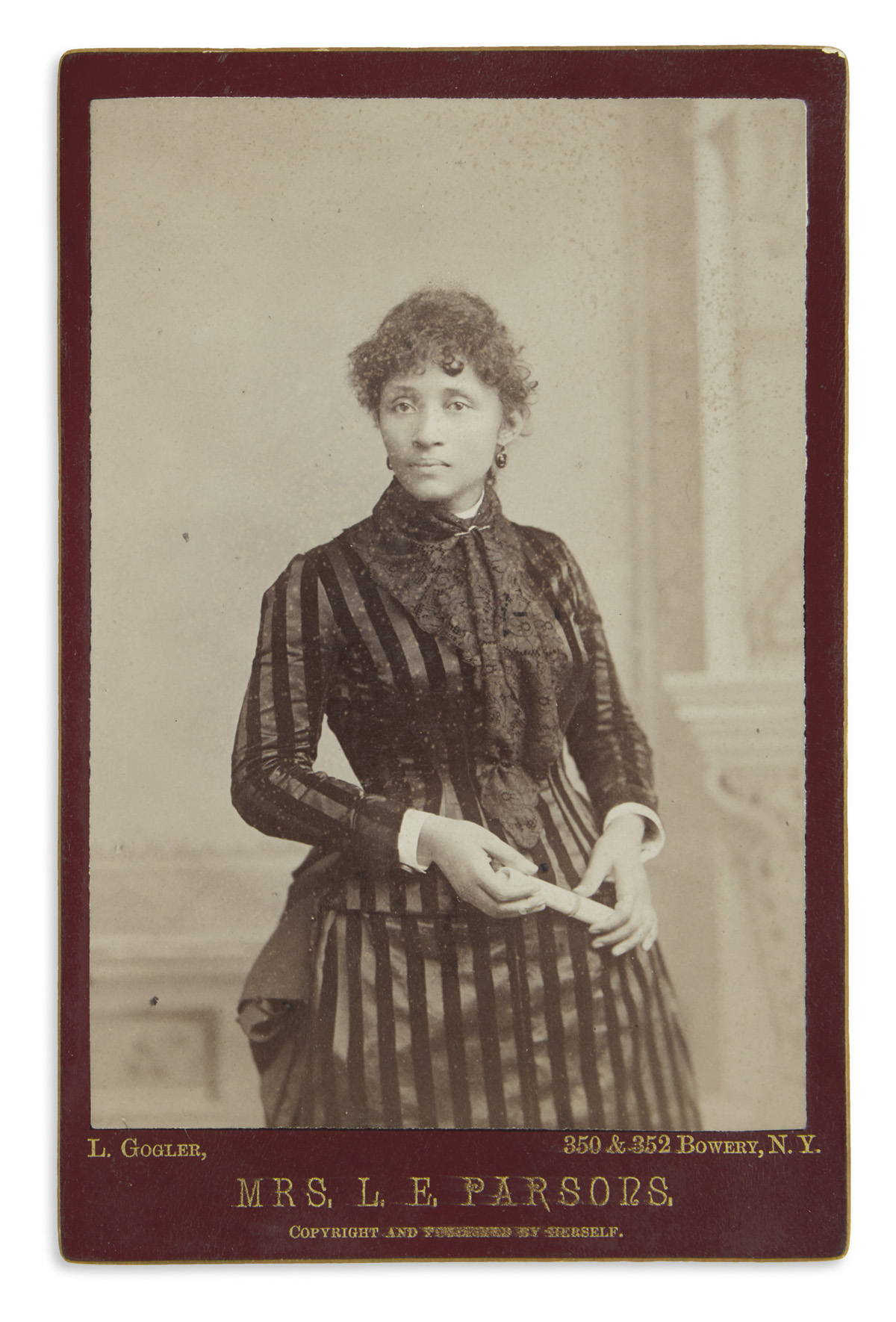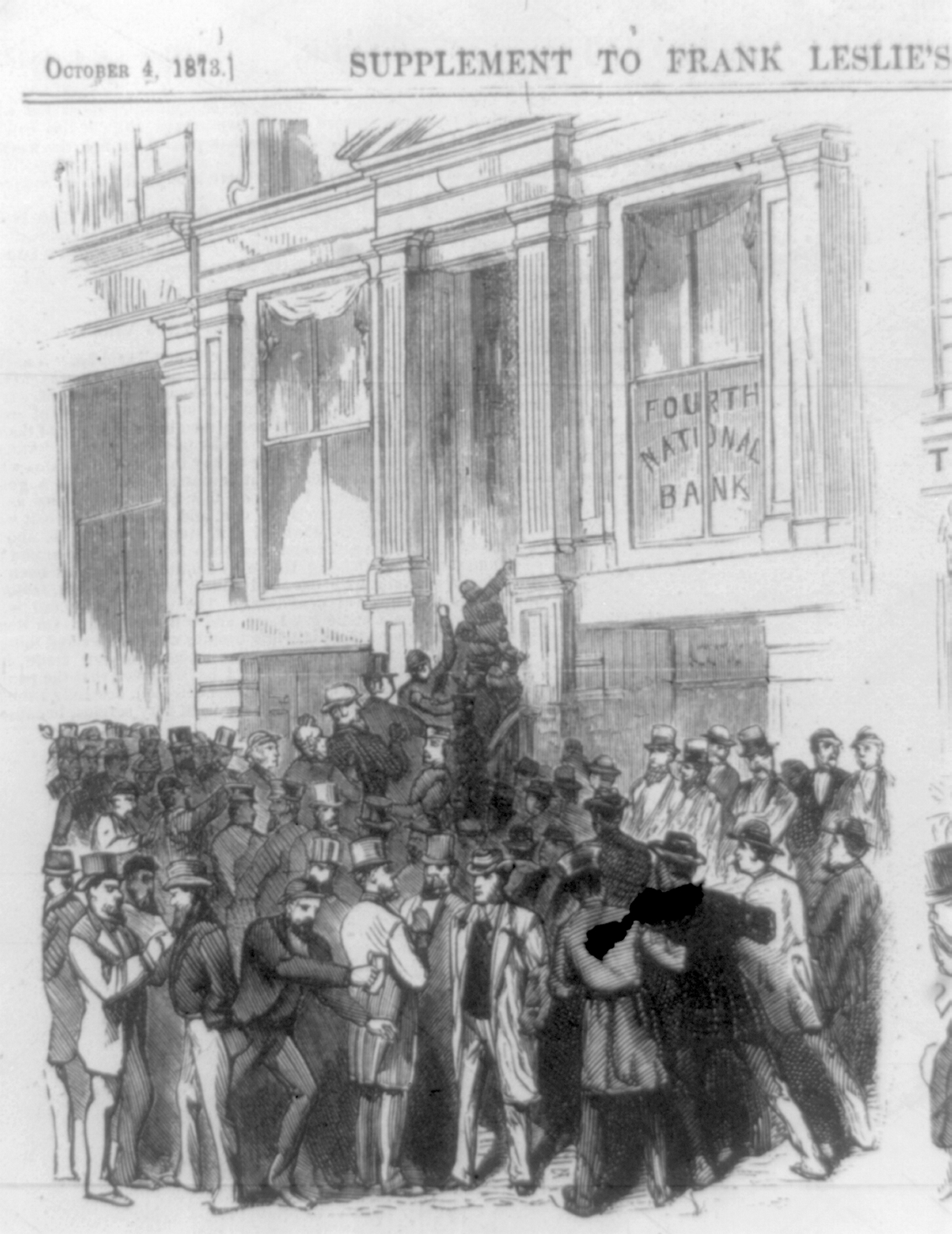|
Haymarket Bombing
The Haymarket affair, also known as the Haymarket massacre, the Haymarket riot, the Haymarket Square riot, or the Haymarket Incident, was the aftermath of a bombing that took place at a labor demonstration on May 4, 1886, at Haymarket Square in Chicago, Illinois, United States. It began as a peaceful rally in support of workers striking for an eight-hour work day, the day after the events at the McCormick Harvesting Machine Company, during which one person was killed and many workers injured. An unknown person threw a dynamite bomb at the police as they acted to disperse the meeting, and the bomb blast and ensuing gunfire resulted in the deaths of seven police officers and at least four civilians; dozens of others were wounded. In the internationally publicized legal proceedings that followed, eight anarchists were convicted of conspiracy. The evidence was that one of the defendants may have built the bomb, but none of those on trial had thrown it, and only two of the eight we ... [...More Info...] [...Related Items...] OR: [Wikipedia] [Google] [Baidu] |
Great Railroad Strike Of 1877
The Great Railroad Strike of 1877, sometimes referred to as the Great Upheaval, began on July 14 in Martinsburg, West Virginia, after the Baltimore and Ohio Railroad (B&O) cut wages for the third time in a year. This strike finally ended 52 days later, after it was put down by unofficial militias, the National Guard, and federal troops. Because of economic problems and pressure on wages by the railroads, workers in numerous other cities, in New York, Pennsylvania and Maryland, into Illinois and Missouri, also went out on strike. An estimated 100 people were killed in the unrest across the country. In Martinsburg, Pittsburgh, Philadelphia and other cities, workers burned down and destroyed both physical facilities and the rolling stock of the railroads—engines and railroad cars. Local populations feared that workers were rising in revolution such as the Paris Commune of 1871. At the time, the workers were not represented by trade unions. The city and state governments were ai ... [...More Info...] [...Related Items...] OR: [Wikipedia] [Google] [Baidu] |
Haymarket Martyrs' Monument
The ''Haymarket Martyrs' Monument'' is a funeral monument and sculpture located at Forest Home Cemetery in Forest Park, Illinois, a suburb of Chicago. Dedicated in 1893, it commemorates the defendants involved in labor unrest who were blamed, convicted, and executed for the still unsolved bombing during to the Haymarket Affair (1886). The monument's bronze sculptural elements are by artist Albert Weinert. On February 18, 1997, the monument was designated a National Historic Landmark. History Following the Haymarket affair, trial and executions, August Spies, Adolph Fischer, George Engel, Louis Lingg, and Albert Parsons were buried at the German Waldheim Cemetery (later merged with Forest Home Cemetery). The Pioneer Aid and Support Association organized a subscription for a funeral monument. In 1893, the ''Haymarket Martyrs' Monument'' by sculptor Albert Weinert was raised at Waldheim. It consists of a 16-foot-high granite shaft capped by a carved triangular stone. There is a t ... [...More Info...] [...Related Items...] OR: [Wikipedia] [Google] [Baidu] |
Albert Parsons
Albert Richard Parsons (June 20, 1848 – November 11, 1887) was a pioneering American socialist and later anarchist newspaper editor, orator, and labor activist. As a teenager, he served in the military force of the Confederate States of America in Texas, during the American Civil War. After the war, he settled in Texas, and became an activist for the rights of former slaves, and later a Republican party (United States), Republican official during Reconstruction era, Reconstruction. With his wife Lucy Parsons, he then moved to Chicago in 1873 and worked in newspapers. There he became interested in the rights of workers. In 1884, he began editing ''The Alarm (newspaper), The Alarm'' newspaper. Parsons was one of four Chicago radical leaders controversially convicted of conspiracy and hanged following a bomb attack on police remembered as the Haymarket affair. Early years Albert Parsons was born June 20, 1848, in Montgomery, Alabama, one of the ten children of the proprietor of a ... [...More Info...] [...Related Items...] OR: [Wikipedia] [Google] [Baidu] |
Anarchism
Anarchism is a political philosophy and movement that is skeptical of all justifications for authority and seeks to abolish the institutions it claims maintain unnecessary coercion and hierarchy, typically including, though not necessarily limited to, governments, nation states, and capitalism. Anarchism advocates for the replacement of the state with stateless societies or other forms of free associations. As a historically left-wing movement, usually placed on the farthest left of the political spectrum, it is usually described alongside communalism and libertarian Marxism as the libertarian wing (libertarian socialism) of the socialist movement. Humans lived in societies without formal hierarchies long before the establishment of formal states, realms, or empires. With the rise of organised hierarchical bodies, scepticism toward authority also rose. Although traces of anarchist thought are found throughout history, modern anarchism emerged from the Enlightenment. ... [...More Info...] [...Related Items...] OR: [Wikipedia] [Google] [Baidu] |
Michigan Avenue (Chicago)
Michigan Avenue is a north-south street in Chicago which runs at 100 east on the Chicago grid. The northern end of the street is at Lake Shore Drive on the shore of Lake Michigan in the Gold Coast Historic District. The street's southern terminus is at Sibley Boulevard in the southern suburb of Harvey, though like many Chicago streets it exists in several disjointed segments. As the home of the Chicago Water Tower, the Art Institute of Chicago, Millennium Park, and the shopping on the Magnificent Mile, it is a street well known to Chicago natives as well as tourists to the city. Michigan Avenue also is the main commercial street of Streeterville. It includes all of the Historic Michigan Boulevard District and most of the Michigan–Wacker Historic District, including the scenic urban space anchored by the DuSable Bridge, DuSable (Michigan Avenue) Bridge. History The oldest section of Michigan Avenue is the portion that currently borders Grant Park (Chicago), Grant Park i ... [...More Info...] [...Related Items...] OR: [Wikipedia] [Google] [Baidu] |
Milwaukee
Milwaukee ( ), officially the City of Milwaukee, is both the most populous and most densely populated city in the U.S. state of Wisconsin and the county seat of Milwaukee County. With a population of 577,222 at the 2020 census, Milwaukee is the 31st largest city in the United States, the fifth-largest city in the Midwestern United States, and the second largest city on Lake Michigan's shore behind Chicago. It is the main cultural and economic center of the Milwaukee metropolitan area, the fourth-most densely populated metropolitan area in the Midwest. Milwaukee is considered a global city, categorized as "Gamma minus" by the Globalization and World Cities Research Network, with a regional GDP of over $102 billion in 2020. Today, Milwaukee is one of the most ethnically and culturally diverse cities in the U.S. However, it continues to be one of the most racially segregated, largely as a result of early-20th-century redlining. Its history was heavily influenced ... [...More Info...] [...Related Items...] OR: [Wikipedia] [Google] [Baidu] |
General Strike
A general strike refers to a strike action in which participants cease all economic activity, such as working, to strengthen the bargaining position of a trade union or achieve a common social or political goal. They are organised by large coalitions of political, social, and labour organizations and may also include rallies, marches, boycotts, civil disobedience, non-payment of taxes, and other forms of direct or indirect action. Additionally, general strikes might exclude care workers, such as teachers, doctors, and nurses. Historically, the term general strike has referred primarily to solidarity action, which is a multi-sector strike that is organised by trade unions who strike together in order to force pressure on employers to begin negotiations or offer more favourable terms to the strikers; though not all strikers may have a material interest in the negotiations, they all have a material interest in maintaining and strengthening the collective efficacy of strikes as a ... [...More Info...] [...Related Items...] OR: [Wikipedia] [Google] [Baidu] |
Eight-hour Day
The eight-hour day movement (also known as the 40-hour week movement or the short-time movement) was a social movement to regulate the length of a working day, preventing excesses and abuses. An eight-hour work day has its origins in the 16th century Spain, but the modern movement dates back to the Industrial Revolution in Britain, where industrial production in large factories transformed working life. At that time, the working day could range from 10 to 16 hours, the work week was typically six days a week and the use of child labour was common. The first country that introduced the 8-hour work day by law for factory and fortification workers was Spain in 1593. In contemporary era, it was established for all professions by the Soviet Union in 1917. History Sixteenth century In 1594, Philip II of Spain established an eight-hour work day by a royal edict known as '' Ordenanzas de Felipe II'', or Ordinances of Philip II. This established: An exception was applied to mine ... [...More Info...] [...Related Items...] OR: [Wikipedia] [Google] [Baidu] |
Arbeiter-Zeitung (Chicago)
__NOTOC__ The ''Arbeiter-Zeitung'', also known as the ''Chicagoer Arbeiter-Zeitung'' was a German-language, radical newspaper started in Chicago, Illinois in 1877 by veterans of the Great Railroad Strike of 1877. It continued publishing through 1931. It was the first working-class newspaper in Chicago to last for a significant period, and sustained itself primarily through reader funding. The reader-owners removed several editors over its run due to disagreements over editorial policies. The ''Arbeiter-Zeitung'' was initially edited by German-American émigrés Paul Grottkau and August Spies. Grottkau departed for Milwaukee, Wisconsin in 1883 to establish the ''Milwaukee Arbeiter-Zeitung,'' leaving the Chicago paper in the hands of Spies, who was officially named editor in 1884. [...More Info...] [...Related Items...] OR: [Wikipedia] [Google] [Baidu] |
Knights Of Labor
Knights of Labor (K of L), officially Noble and Holy Order of the Knights of Labor, was an American labor federation active in the late 19th century, especially the 1880s. It operated in the United States as well in Canada, and had chapters also in Great Britain and Australia. Its most important leader was Terence V. Powderly. The Knights promoted the social and cultural uplift of the worker, and demanded the eight-hour day. In some cases it acted as a labor union, negotiating with employers, but it was never well organized or funded. It was notable in its ambition to organize across lines of gender and race and in the inclusion of both skilled and unskilled labor. After a rapid expansion in the mid-1880s, it suddenly lost its new members and became a small operation again. The Knights of Labor had served, however, as the first mass organization of the white working class of the United States. It was founded by Uriah Stephens on December 28, 1869, reached 28,000 members in 1880, ... [...More Info...] [...Related Items...] OR: [Wikipedia] [Google] [Baidu] |
Bohemia
Bohemia ( ; cs, Čechy ; ; hsb, Čěska; szl, Czechy) is the westernmost and largest historical region of the Czech Republic. Bohemia can also refer to a wider area consisting of the historical Lands of the Bohemian Crown ruled by the Bohemian kings, including Moravia and Czech Silesia, in which case the smaller region is referred to as Bohemia proper as a means of distinction. Bohemia was a duchy of Great Moravia, later an independent principality, a kingdom in the Holy Roman Empire, and subsequently a part of the Habsburg monarchy and the Austrian Empire. After World War I and the establishment of an independent Czechoslovak state, the whole of Bohemia became a part of Czechoslovakia, defying claims of the German-speaking inhabitants that regions with German-speaking majority should be included in the Republic of German-Austria. Between 1938 and 1945, these border regions were joined to Nazi Germany as the Sudetenland. The remainder of Czech territory became the Second ... [...More Info...] [...Related Items...] OR: [Wikipedia] [Google] [Baidu] |
Long Depression
The Long Depression was a worldwide price and economic recession, beginning in 1873 and running either through March 1879, or 1896, depending on the metrics used. It was most severe in Europe and the United States, which had been experiencing strong economic growth fueled by the Second Industrial Revolution in the decade following the American Civil War. The episode was labeled the "Great Depression" at the time, and it held that designation until the Great Depression of the 1930s. Though a period of general deflation and a general contraction, it did not have the severe economic retrogression of the Great Depression. It was most notable in Western Europe and North America, at least in part because reliable data from the period is most readily available in those parts of the world. The United Kingdom is often considered to have been the hardest hit; during this period it lost some of its large industrial lead over the economies of continental Europe. While it was occurring, th ... [...More Info...] [...Related Items...] OR: [Wikipedia] [Google] [Baidu] |







